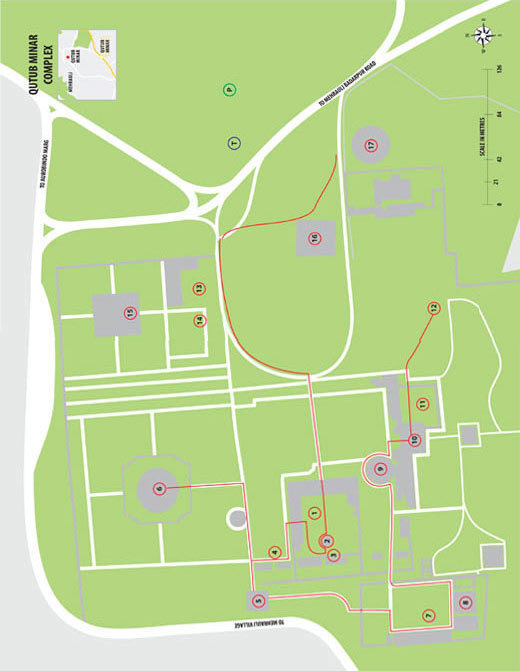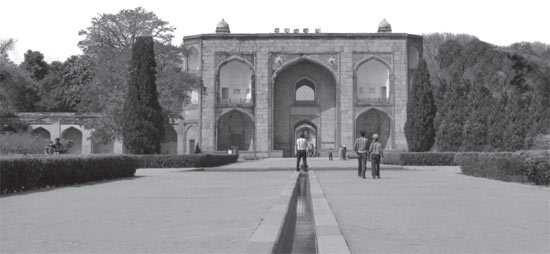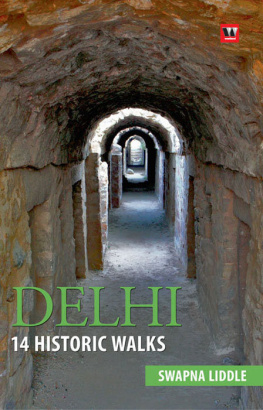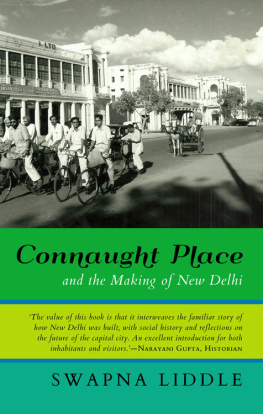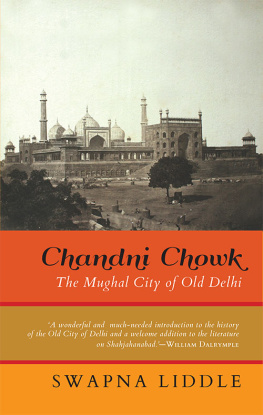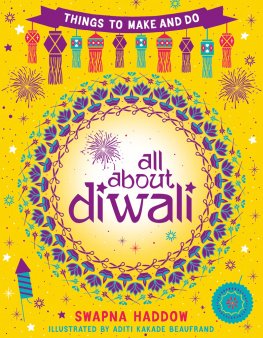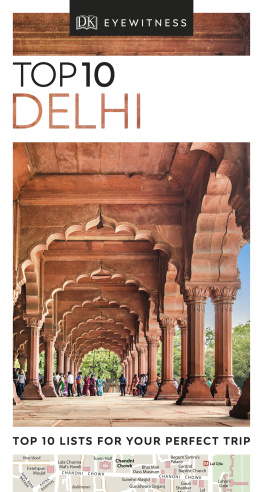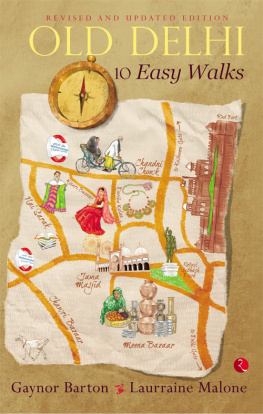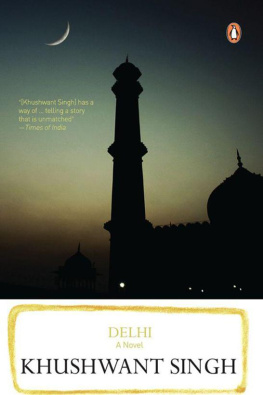westland ltd
DELHI: 14 HISTORIC WALKS
Swapna Liddle studied history, getting her doctorate for a thesis on nineteenth-century Delhi. Beginning as a casual interest, the protection of Delhis old buildings developed into a passion. For some years now, she has been organizing and leading walks around the historic precincts of the city for the India Habitat Centre and the Indian National Trust for Art and Cultural Heritage (INTACH). She is also closely involved with INTACHs heritage protection and public awareness programmes.
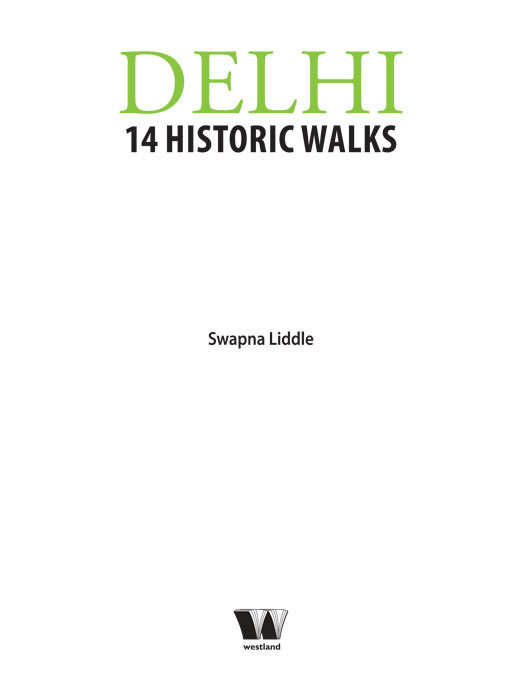
westland ltd
Venkat Towers, 165, P.H. Road, Maduravoyal, Chennai 600 095
No. 38/10 (New No.5), Raghava Nagar, New Timber Yard Layout, Bangalore 560 026
Survey No. A - 9, II Floor, Moula Ali Industrial Area, Moula Ali, Hyderabad 500 040
23/181, Anand Nagar, Nehru Road, Santacruz East, Mumbai 400 055
4322/3 Ansari Road, Daryaganj, New Delhi 110 002
First published in India by westland ltd 2011
Copyright Swapna Liddle 2011
Photographs Swapna Liddle and Madhulika Liddle
Maps Kapil Agarwal
All rights reserved
ISBN: 978-93-81626-24-5
Design & Layout by Manav Agarwal
This book is sold subject to the condition that it shall not by way of trade or otherwise, be lent, resold, hired out, circulated, and no reproduction in any form, in whole or in part (except for brief quotations in critical articles or reviews) may be made without written permission of the publishers.
For my mother, from whom I learnt a love for language, and my father who taught me that anything worth doing is worth doing with a passion.
CONTENTS
Neither the walks nor this book would have been possible without the help of a large number of people. Many years ago it was Arshiya Sethi who first suggested that I could lead walks around historic sites in Delhi. Prof Narayani Gupta, apart from being a guide and mentor, introduced me to INTACH. Renu Oberoi and Shivani Darbari have helped me to be a part of the walks programme at the India Habitat Centre. A number of people at INTACHAjay Kumar, Priya Sinha and the other dedicated walk leaders have lent their support and taught me much. I must also thank the hundreds of people who have joined me for a walkthey are the reason to keep doing walks, and are frequently the source of new pieces of information.
Delhi: 14 Historic Walks in particular, would not have come about without the initial suggestion from Renuka Chatterjee, the hard work of Jaya Bhattacharji Rose and Manav Agarwal, and my sister, Madhulika Liddle, who took lovely photographsthank you all.
This book is the outcome of years of walking through historic areas in Delhi. I have walked alone, with friends, leading organized heritage walks, or on walks led by others. Through books and other peoples walks, I have discovered many areas, that have not only led me to interesting places but also helped me understand the history behind the buildings.
It has been a long journey, and it is by no means over. I have a suprisingly long list of places that I am either still to visit or have not visited in a long time. I am constantly getting fresh perspectives on the well-worn trails by new discoveries in the library.
I hope this book will tempt others to find equal pleasure in the historic walks that I have found, without having to either join an organized walk, or having to do extensive research for reliable historical information. The fourteen walking routes in Delhi included in this book are tried and tested. Some are through areas that are very well known and are ticketed historic attractions, including the three World Heritage SitesQutub Minar complex, Humayuns Tomb and Red Fort. Others, such as Khirki or Mehrauli village, are relatively unknown, except perhaps to those living in the immediate vicinity.
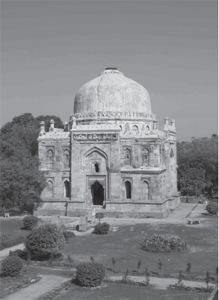
My excuse for including the very well-known tourist sites is that the information provided by the signs or tourist guides are either frustratingly inadequate, or more seriously, wildly inaccurate. Yet these are fascinating places with great historical significance. For the less well-known areas, often these are buildings that are in the neighbourhood, or beside the road but information at these sites is often inadequate, if it exists at all.
The selection criteria for each route in this book was first and foremost that there should be enough to see so that it is rewarding. There should be an interesting story behind the buildings and/or a background history of the area, tying them together. It should be a fairly pleasant walkI have left out the particularly litter-strewn or overgrown paths. I have also tried to include only those buildings that are easily accessible to the public. Nothing can be more frustrating than to read about a wonderful place, only to discover that it cannot be visited. The status of the buildings does however keep changing. So readers, please forgive me, if a building accessible at the time of going to print has subsequently become inaccessible.
The walking routes charted out here will lead you clearly through an area, helping you find your way around and identify each building. Each walk will tell you about the historical background of the site that you are visiting, quite apart from the individual buildings within it. At each building it will tell you its history to the extent that it is known. It will also point out significant architectural and decorative features, and the concepts and techniques that lay behind them. Delhi: 14 Historic Walks intends to go further than the average guide book; I have tried to incorporate insights that are rarely known beyond academic publications. Before this frightens off the lay reader, I hasten to add that I have done this in an easy-to-read style.
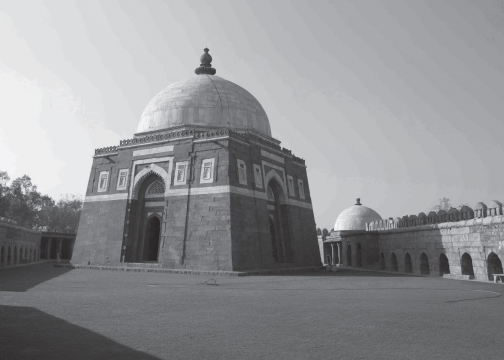
The walks are arranged in a roughly chronological order-oldest areas to newest. I say/roughly, because in most areas there are buildings dating from different times. On the whole, however, the idea is that if you proceed from one to the next in an orderly fashion you will get a systematic history of the development of the city and its architectural heritage. Of course this is not essential. Each walk stands alone, and if you have the time or inclination for even just one, go ahead and pick any.
At the beginning of each walk I have included some practical information such as timings and the rate of tickets. Other helpful tips to ease your way through particular areas include maps, an essential tool for navigating the areas, for each walk. Ordinarily, the walks can be accomplished in a duration ranging from one and a half hours to two and a half hours at the maximum. I have also pointed out the highlights of each walk so that if you have less time you can finish in an hour or so.
